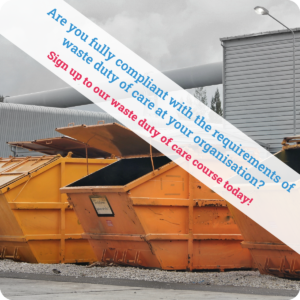CBAM has been introduced as a complement to EU and UK ETS, in order to “put a fair price” on carbon emitted during the production of intensive industrial goods, such as the aluminium, cement, ceramics, fertiliser, glass, hydrogen, iron and steel sectors. This is done by reporting emissions and buying CBAM certificates to cover those emissions.
Importers will be required to pay a price on imported goods from a third country to cover the emissions as though they had been produced under the EU pricing rules. If a non-EU importer can show they have already paid a carbon price, then that price will be deducted from the costs to the EU importer.
The goal of the scheme is to help tackle climate change and to try and prevent carbon leakage*.
*Carbon leakage is where a manufacturer moves production to another country with a lower carbon price or less stringent emissions regulations.
The mechanism is currently in a transition phase in the EU. This means that any organisation that imports eligible goods* into the EU must report the following information every quarter.
- The quantities of CBAM goods imported during the quarter.
- The embedded direct and greenhouse gas emissions of those goods.
- Any carbon price due in the country of origin.
*Eligible goods for this phase are from the cement, iron & steel, aluminium, fertilizer, electricity, and hydrogen sectors. A list of the eligible sectors and associated guidance can be found here.
The full scheme, including requirements to pay for certificates will only fully come into effect in the EU by 2026.
The UK is also aiming to implement UK CBAM by 2027, with consultations on the design and delivery of the scheme happening later this year. There are no current requirements under UK CBAM, however, applicable organisations are encouraged to start collecting data for reporting.
There are current trading systems in place, namely the EU and UK ETS, which operate through the trading of emissions allowances between organizations using a ‘cap and trade’ system. They also include free allowances for organisations who are at risk of carbon leakage in order to keep production in the country.
CBAM differs from an emissions trading scheme in that there is no trading system between organisations. It also aims to phase out free allowances from 2026 as CBAM will apply if they import goods into the EU, regardless of where they are located.
More information and guidance can be found below.
- EU Carbon leakage.
- Carbon Border Adjustment Mechanism from the Taxation and Customs Union.
- UK CBAM from the Department for Energy Security and Net Zero.
- Regulation (EU) 2023/956 establishing a carbon border adjustment mechanism.
- Regulation (EU) 2023/1773 laying down the rules for the application of Regulation (EU) 2023/956 as regards reporting obligations for the purposes of the carbon border adjustment mechanism during the transitional period.
